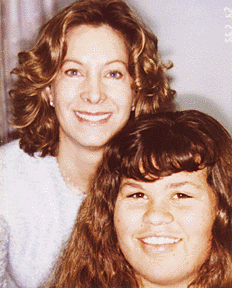


Hawaii eye
surgery gets
national focus
A groundbreaking operation
By Helen Altonn
via telemedicine give teen
a new outlook
Star-BulletinDanelle Rodrigues, 16, returned to Honokaa High School a celebrity after a unique surgical procedure.
The shy Paauilo teen-ager laughs at the idea that she made history at the Feb. 3 event -- aired around the world by NBC Nightly News and CNN. She just says she feels "good."
Danelle had a tumor in her orbital eye socket which Kona ophthalmologist Susan H. Senft removed at North Hawaii Community Hospital.
Guiding her from St. Francis Medical Center on Oahu was ophthalmologist Jorge G. Camara.
Telemedicine has been used for diagnosis, teaching and lectures. But this was its first use for eye surgery, and it attracted international attention.
NBC National News Producer John Boxley told the surgeons he was "fascinated by this story." He said it showed the world how technology can be used to provide isolated and disadvantaged areas with the best medical care.

Camara and Senft said their first goal was to take the best possible care of Danelle. Secondly, they wanted to stimulate development of telemedicine here and abroad."I believe we were able to do this," Camara said.
Senft said, "It has become a major contribution to the scientific community ... I'm actually overwhelmed by the impact of it."
Physicians on the mainland, in Saudi Arabia, Spain, the United Kingdom, Southeast Asia and elsewhere have been calling the hospitals to ask about telemedicine surgery, the ophthalmologists said. A physician in Spain wants to come here to learn telemedicine and orbital procedures, Camara said.
Big Island doctors are interested in linking with mainland centers to do other kinds of surgery, Senft said.
She said someone in the San Francisco area apparently saw a broadcast of the surgery and called to see if she and Camara could help their child.
Camara said the child is 8 months old and has a very rare condition affecting the muscles and socket of the eye and the sinus cavity.

"We're studying the case this point," he said. "We don't want to interfere with the doctor-patient relationship there."Danelle's tumor was benign but had begun to grow rapidly and push on the eye, Camara said.
He said it was "a very complex endeavor" to watch Senft by TV monitor and guide her from more than 200 miles away while she dissected the growth.
But the two surgeons were comfortable working together, explaining they've known each other 20 years since they were two years apart as residents in Baylor University's medical school. Camara said they rehearsed carefully with the videoconferencing crew to prepare for anything that might go wrong with the audio or video.
He wants to do medical telementoring in the Philippines tied in with the Aloha Medical Mission. However, he said, "For me to telementor a case, the transmitting ability has to be very high level. Here, we have very high speed."
He said insurance, ethical, liability and licensure issues impede telemedicine development in the United States but efforts are being made to resolve them.
Danelle isn't back to her hula-dancing yet but she no longer has headaches.
"She really has benefited being able to stay in her home community and receive quality care," Senft said. "I'm really pleased that something like this could happen in Hawaii and make such a difference for people."